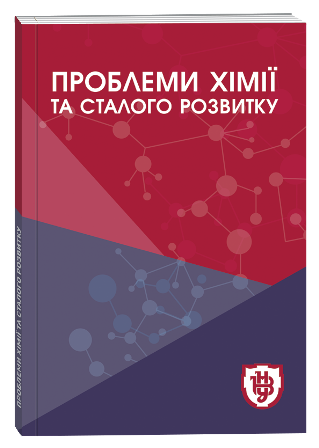ASSESSMENT OF LAKE VELYKE EUTROPHICATION BY REMOTE SENSING METHODS
DOI:
https://doi.org/10.32782/pcsd-2023-1-10Keywords:
lake, limnosystem, hydroecological state of the lake, lake eutrophication, eutrophication level, remote sensing methodsAbstract
The purpose of the article is to determine the level of eutrophication of Lake Velyke for its rational use and protection. To achieve this goal, it is necessary to assess the level of eutrophication of the lake, its dynamics, causes, and to propose ways to reduce the level of eutrophication. The methodological basis of the work is the achievements of Ukrainian and foreign scientists in the field of limnology, hydroecology, and remote sensing. Methods used: analysis of the hydrometric characteristics and hydrological regime of the lake, geoecological assessment of the lake catchment, assessment of lake eutrophication by remote sensing methods. The scientific novelty of the work is that the article provides a practical implementation of the methodology for assessing the level of eutrophication of one the typical Volyn’s lake. Conclusions and prospects of research. The hydroecological state of the lake is deteriorating due to anthropogenic impact. The irrational structure of land use in the catchment area (excess of areas of ecologically unstable landscapes over stable ones) and violation of sanitary and environmental standards during the development of coastal zones have a particularly negative impact. As a result, surface runoff from the catchment pollutes the lake. Pollution by nutrients is particularly dangerous. An increase in their concentration in water causes eutrophication of the reservoir. The level of eutrophication of the lake is assessed as not high. But even at this level of eutrophication, water quality is decreasing and environmental conditions for living organisms are deteriorating. In order to improve the hydroecological state of the lake, it is necessary to reduce the flow of nutrients into the lake, improve its hydrological regime and implement measures to counteract climate warming.
References
Ільїн Л.В. Лімнокомплекси Українського Полісся. У 2 т. Т. 2. Регіональні особливості та оптимізація: монографія. Луцьк: РВВ "Вежа" ВНУ ім. Лесі Українки, 2008. 340 с.
Ільїн Л.В., Мольчак Я.О. Озера Волині: лімно-географічна характеристика. Луцьк: Надстир'я, 2000. 140 с.
Лахай Ю.О. Екологічна оцінка природних умов басейну річки Турія. Гідрологія, гідрохімія і гідроекологія. 2012. 2. С. 216- 222.
Мартинюк В.О., Зубкович І.В., Андрійчук С.В. Регіональна геоекологічна оцінка озер Українського Полісся. Регіональні геоекологічні проблеми в умовах сталого розвитку. Збірник наукових праць ІІІ Міжнар. наук.-практ. конференції (Рівне, 18-20.10.2018). 2018. С. 78-86.
Поверхневі води Волині: колективна монографія / за ред. Я.О. Мольчака. Луцьк: Терен, 2019. 344 с.
Федоровський О. Д., Хижняк А. В, Томченко О. В. Оцінка якості водного середовища міських водойм з використанням методів системного аналізу на основі комплексування даних ДЗЗ. Космічна наука і технологія. 2021. Т. 27. № 5. С. 11-18.
Фесюк В.О., Полянський С.В., Копитюк Т.В. Методика та практична імплементація застосування даних
ДЗЗ для моніторингу евтрофікації водойм (на прикладі Турського озера). Наукові записки Тернопільського національного педагогічного університету імені Володимира Гнатюка. Серія: географія. 2022. № 1. C. 159-166
Шевчук М.Й., Юрчук П.В., Горун А.А. Екологічний стан озерних екосистем Волині та основні напрями його покращення. Науковий вісник Волинського національного університету ім. Лесі Українки. 2009. № 1. С. 188-191.
Шульгач А.С. Ландшафтне різноманіття перспективного національного природного парку ,,Лісова пісня”. Фізична географія та геоморфологія. 2015. № 6. С. 165-168.
NDVI. URL: https://apps.sentinel-hub.com/eo-browser/?zoom=16&lat= 51.06328&lng=24.8132&themeId=DEFAULT- 24T23%3A59%3A59.999Z







